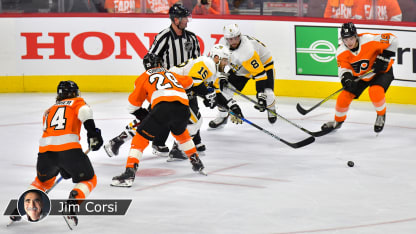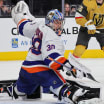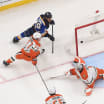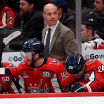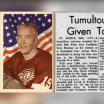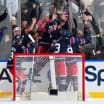The second period, the Flyers give up eight chances, including five with the Penguins on the power play and a rush chance off the faceoff. The next thing you know, they're trying to pick up the pieces and the game is out of reach.
Turnovers nearly cost them in Game 2 as well. They had two on the opening shift and Giroux gifted Crosby a breakaway in the second period when the Flyers were leading 2-0. He scores there and that game, which ended 5-1 in the Flyers' favor, might take a different tone.
The Flyers are doubling down by giving Pittsburgh too many power-play opportunities.
The Penguins had eight in the first two games and connected once. They were 0-for-4 in Game 2, when the power play didn't create any energy. But they stayed on task, realized it's not about one game, it's about one series, and sure enough they scored three on seven chances in Game 3.
That's just way too many power plays to give the team with best power play in the League.
I had the Flyers owning a 9-7 advantage in even-strength scoring chances in Game 3, but the Penguins got 10 scoring chances on the power play and scored three times. That's game, set, match on most nights in the NHL.
Let's be sure to credit the Penguins here, because they are earning what they are getting and taking advantage of it. Good teams do that. Championship teams do it a lot.
The Penguins also know it's happening, so they will continue to try to come at the Flyers with speed to create space, turnovers and power-play opportunities in Game 4. The Flyers must flip it on the Penguins, and one way to do that is to create more opportunities in front of goaltender Matt Murray.
They're traffic-less for the most part in the series. In fact, if you look at the goal they scored in Game 3, the long shot from the blue line from defenseman Travis Sanheim, the one guy in front of Murray is his own defenseman, Dumoulin, and the puck goes right through his legs.
